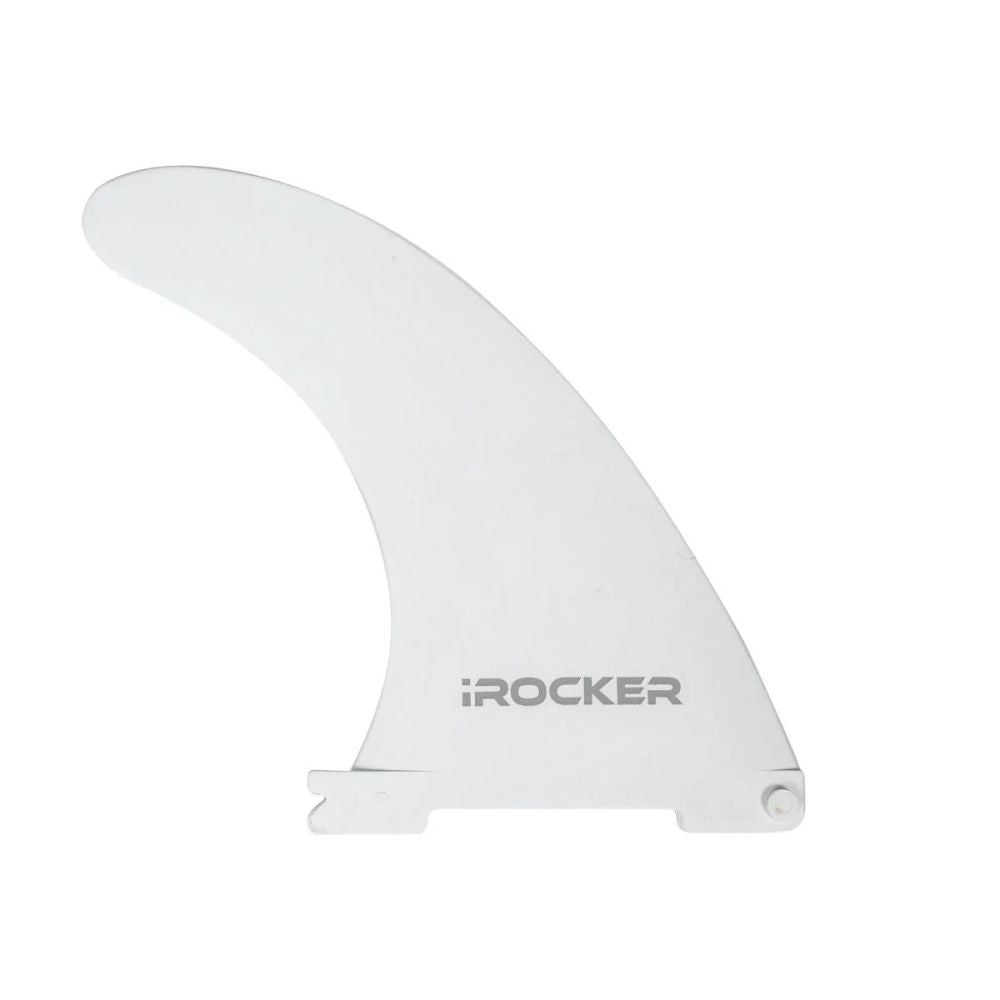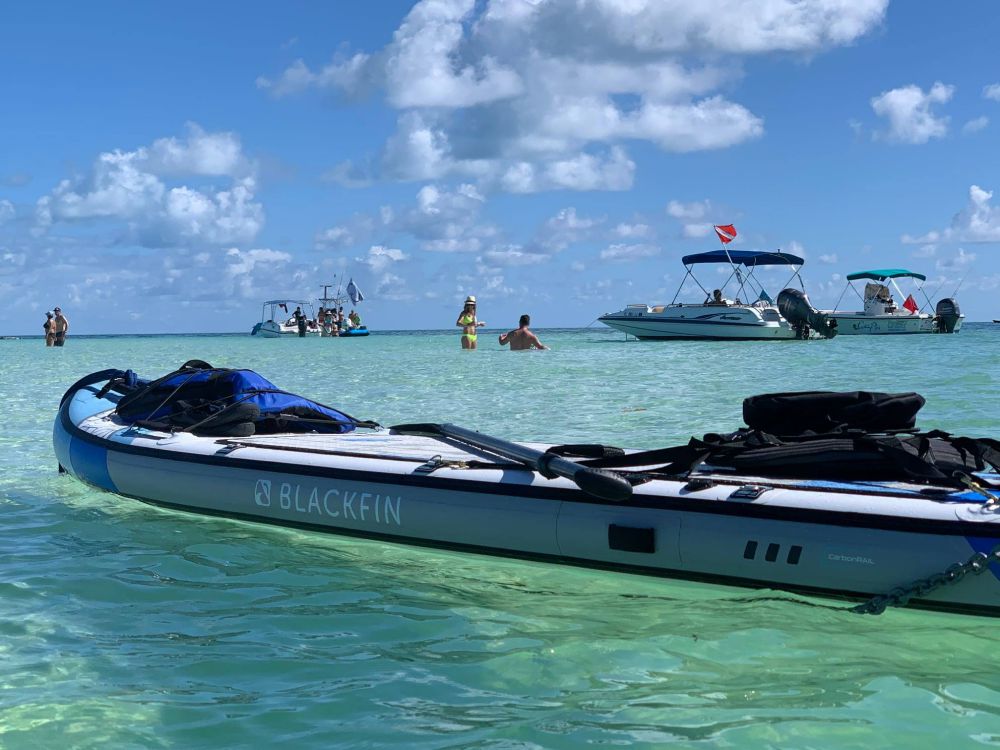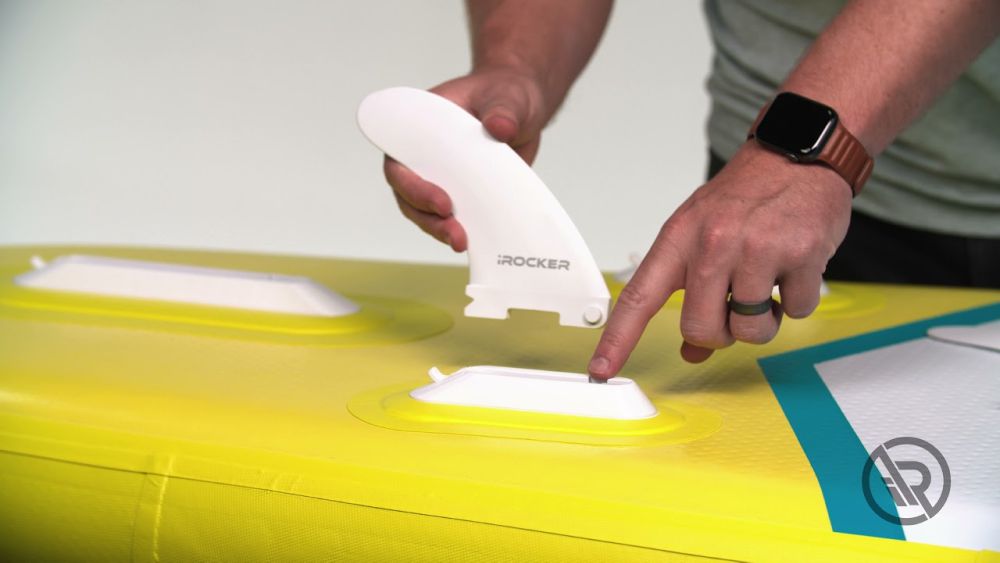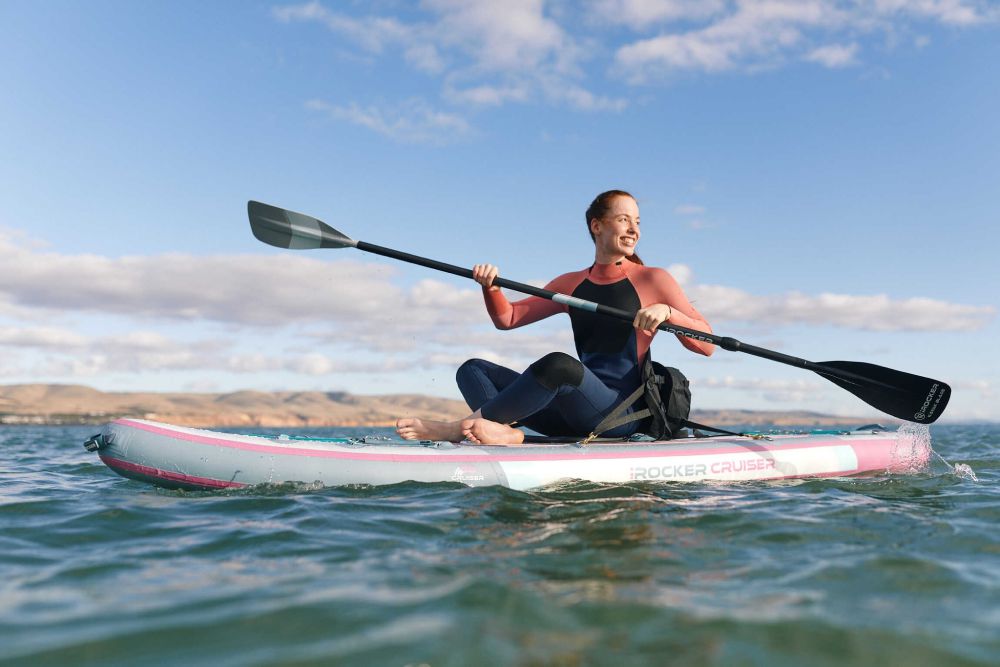Stand up paddle boarding has become a beloved pastime for water enthusiasts of all skill levels. However, mastering the nuances of stand up paddle board fin setup can take a paddler's experience to new heights. The right fin configuration has the power to enhance tracking, improve stability, and unlock newfound speed and maneuverability on the water. Through this article, our thorough guide explores the intricacies of the right fin setup and offers detailed insights to help enthusiastic paddlers unlock their board's full potential.
Different Types of Fin Setup for SUP
Transitioning between the various fin setups available for stand up paddle boards can significantly impact the board's performance, stability, and handling characteristics. Typically, there are 4 primary configurations for paddlers to choose from.
1. Single Fin
The single fin has its roots firmly in surfing, with the earliest surfboards all featuring a single large fin. Even today, longboards and smaller boards down to 7'6" can utilize a single fin, as riders appreciate its tracking and turning capabilities.

The single fin is known for its excellent straight-line speed and tracking, as well as its stability, due to the centralized placement of the larger fin acting as a fulcrum point against the water. This setup is well-suited for touring or racing stand up paddle boards, as well as all-around boards intended for flat-water use or occasional surf conditions.
2. Twin Fin
The twin fin configuration has gained popularity in the surfing world in recent years, featuring two medium-sized fins positioned slightly forward of where a center fin would typically be placed. This setup offers a fast, straight-line feel with the ability to execute aggressive, high-rail-to-rail turns. However, the trade-off is a decrease in overall stability due to the distributed fin placement.
3. Thruster Fin
The thruster fin setup revolutionized surfing in the early 1980s. It featured a smaller single fin paired with two mid-sized side fins. This configuration provided the stability of a single fin with the powerful turning ability of a twin fin setup.

The thruster remains the most popular fin setup in surfing today. It can also benefit surf-specific stand up paddle board models, allowing for aggressive, high-speed turns on the rail.
4. 1+2 Fin
The 1+2 fin setup, also known as the “bite fins” configuration, blends the advantages of a single large center fin with the added stability and turning performance of two smaller side fins. These side fins are angled inward towards the nose of the board, providing additional “bite” and purchase when the stand up paddle board is being turned on its rail.

This setup allows for tunable performance, enabling paddlers to remove the side fins for a single-fin feel or utilize the full 1+2 configuration for enhanced maneuverability.
How to Choose the Right Fin Setup?
Various fin setups cater to different paddling styles and board attributes. Below are some useful stand up paddle board fin setup tips.
4 Factors to Consider When Choosing Fins
With a clear understanding of the importance of selecting the right stand up paddle board fin setup, let's delve deeper into the key factors that should guide your decision-making process.
1. Type of paddling (e.g., flatwater, surf, race)
The type of paddling you engage in is a primary driver in selecting the appropriate stand up paddle board fin setup. For cruising and leisure paddling, a large center fin offers stability and straight-line tracking. Meanwhile, a thruster setup with a smaller center fin and two larger side fins enables agile, rail-to-rail turns for surfing. Race boards typically opt for a single fin setup to prioritize speed and efficiency.
2. Board type and size
The design and dimensions of your stand up paddle board fin setup also play a significant role in fin selection. Smaller, more maneuverable boards may perform better with a twin fin or 1+2 setup, while larger, more stable platforms may be better suited to a single fin configuration. Inflatable SUPs, in particular, often require specialized fin arrangements to accommodate their unique construction and folding capabilities.
3. Water conditions
Calm, flat-water conditions may call for a setup that prioritizes tracking and straight-line speed, while more turbulent, wave-influenced waters may demand a configuration that enhances turning and maneuverability.
4. Paddler's skill level and preferences
Beginner paddlers may benefit from a more stable, predictable single fin configuration, while experienced SUPers may appreciate the increased performance and responsiveness of a thruster or 1+2 setup.

With a comprehensive understanding of the factors that influence stand up paddle board fin setup, we can now delve into the specific recommendations for various paddling disciplines.
Recommendations for Different Paddling Activities
- A single, large center fin is the clear choice for those who seek the ultimate in flat-water cruising and touring performance
- A single fin setup provides the speed and straight-line stability necessary for aspiring race champions who want to dominate the course.
- Regarding surf-specific stand up paddle boarding, the thruster configuration is perfect for paddlers to execute dynamics thanks to its high-performance turns.
- Those looking to explore a balance of straight-line performance and enhanced maneuverability may find the 1+2 fin setup to be the ideal compromise. It blends the benefits of a center fin with the added stability and enables the capabilities of side fins.

Regardless of your paddling preferences, mastering the art of stand up paddle board fin setup is the key to unlocking your board's true potential.
How to Install and Adjust Fins
Properly installing and adjusting the fins on your stand up paddle board is a crucial step in optimizing your on-water performance. Easy-to-follow instructions below will guide you through the process:
- Step 1: Slide the fin into the designated fin plate on your SUP, ensuring the curved edge is facing forward. Firmly press the fin all the way into the plate, using the palm of your hand if necessary to secure it in place.
- Step 2: Slide the tethered locking tab into the fin plate to firmly secure the fin and prevent it from shifting during your paddle. This simple step will provide peace of mind and ensure your stand up paddle board fin setup remains stable.
- Step 3: When removing the fins, simply remove the locking tab and gently tap the fin out of the plate. Be mindful that salt, debris, or grime buildup can make fin insertion and removal more challenging, so be sure to rinse the fin and plate with fresh water after each use.
- Step 4: Smaller, shallow fins are designed to provide enhanced maneuverability while offering some tracking assistance. These fins are best suited for shallow water environments where a longer fin might catch on the bottom or rocks. Conversely, longer fins with the greater surface area will improve your board's straight-line tracking but may offer more resistance to turns, making them ideal for open-water paddling.
- Step 5: Explore the variety of fin lengths and shapes we offer to fine-tune your stand up paddle board's performance on the water.

Remember, the fins you select and how you position them can dramatically alter how your SUP performs on the water. So take the time to experiment and understand the intricacies of stand-up paddle board fin setup to find the setup that unlocks your board's full potential.
How to Maintain Fins in Top Conditions
After successfully completing the stand up paddle board fin setup process, adopting a proactive approach to fin upkeep will reward you with a smooth, responsive ride every time you hit the water.
Tips
Establishing a daily fin care routine is essential for keeping your stand up paddle board's fin setup in top condition. Here's a rundown of must-do things to keep your paddle boards looking like new:
- Rinse thoroughly: After each paddling session, thoroughly rinse your fins with fresh water, pay close attention to the foot pockets and any crevices that may harbor debris or salt buildup.
- Clean the rubber components: To keep your stand up paddle board fins in good shape, use a non-acetone-based nail cleaner (butyl acetate, ethyl acetate, or isopropyl alcohol) on any colored accents.
- Maintain fin’s flexibility: Apply a few drops of food-grade liquid silicone to the rubber parts of your fins by using a clean or dry cloth.
- Avoid sunlight: Store your stand up paddle board fins in a cool, dry place, away from direct sunlight exposure.
Common Issues and How to Solve Them
Your stand up paddle board fin setup may encounter some issues while using or using after a long time. Here are some common issues that you should pay attention to:
- Difficulty inserting or removing fins: If you notice your fins have become challenging to slide into or extract from the fin boxes, a thorough cleaning with fresh water can often resolve the issue by flushing out any accumulated grit or debris. Avoid forcing the fins, as this could lead to damage.
- Fin damage or deformities: Over time, your stand up paddle board fins may sustain cracks, chips, or other physical deformities that compromise their performance and safety. If you observe any significant damage, replacing the affected fins is crucial to maintain the optimal fin setup for your SUP.
- Loss of fin during use: While rare, a fin can become dislodged from the fin box during use, particularly if the locking mechanism is not properly engaged. Regularly inspecting your fin setup and ensuring the locking tabs are securely in place can help prevent this issue.
- Finbox damage: The fin boxes themselves can also sustain damage, whether from impacts, corrosion, or general wear and tear. This can make it difficult or impossible to properly install your stand up paddle board fins. In such cases, you may need to have the fin box repaired or replaced by a qualified professional.
Perfect IRocker Paddle Board Fin for Your Aquatic Adventures
Whether you're seeking enhanced tracking and stability for flatwater explorations, the agility and maneuverability required for surf riding, or the efficiency and speed needed for race-day domination, the right stand up paddle board fin setup can make all the difference.
Ready to take your paddling to new heights? iROCKER paddle boards are designed to elevate your surf, flat water, and race experience. Our SUP fins are engineered and tested with the world's top athletes to provide superior performance, durability, and customization. Shop our paddle board fins and discover the perfect “match” to transform your time on the water.

FAQs
How do I know which fin setup is best for my SUP and paddling style?
The ideal fin setup depends on a few key factors: the type of paddling you'll be doing (flatwater, surf, river, etc.), your skill level, and the characteristics of your specific SUP board. In general, larger fins provide more stability and tracking for beginners and those paddling in flat conditions. Meanwhile, the smaller ones are more maneuverable and better suited for surf and whitewater. Our team can help you determine the optimal fin configuration based on your SUP, your experience level, and your intended use.
Can I use the same fins for both flatwater and surf/river paddling?
It's usually best to have dedicated fins for different paddling environments. Flatwater fins tend to be larger and provide more tracking. While surf/river fins are smaller and more agile. Using the wrong fin setup can negatively impact your performance and control. We recommend having a set of fins for each type of paddling you plan to do.
How do I properly install and maintain my SUP fins?
Most fins attach via a metal or plastic fin box built into the board. By carefully following the manufacturer's instructions, you can ensure they are securely locked in place. Regular cleaning and inspection of your fins and fin boxes will also help them last longer and perform at their best.
What are the benefits of investing in high-quality, brand-name fins?
Higher-end, name-brand fins are engineered for superior hydrodynamics, durability, and ease of use. They are often made from premium materials like carbon fiber, which provides increased strength and reduced weight. Additionally, brand-name fins are more likely to be compatible with your specific SUP model and come with comprehensive warranties. The performance and peace of mind you get from quality fins can be well worth the investment.
How can I be confident that I'm getting the right advice for my SUP needs?
At iROCKER, our team of SUP experts is dedicated to providing personalized guidance to ensure you get the right equipment and accessories for your paddling style and goals. We have decades of combined experience in the sport and are passionate about helping our customers succeed. When you reach out to us, you can trust that you're receiving knowledgeable, unbiased advice to help you make informed decisions.






















